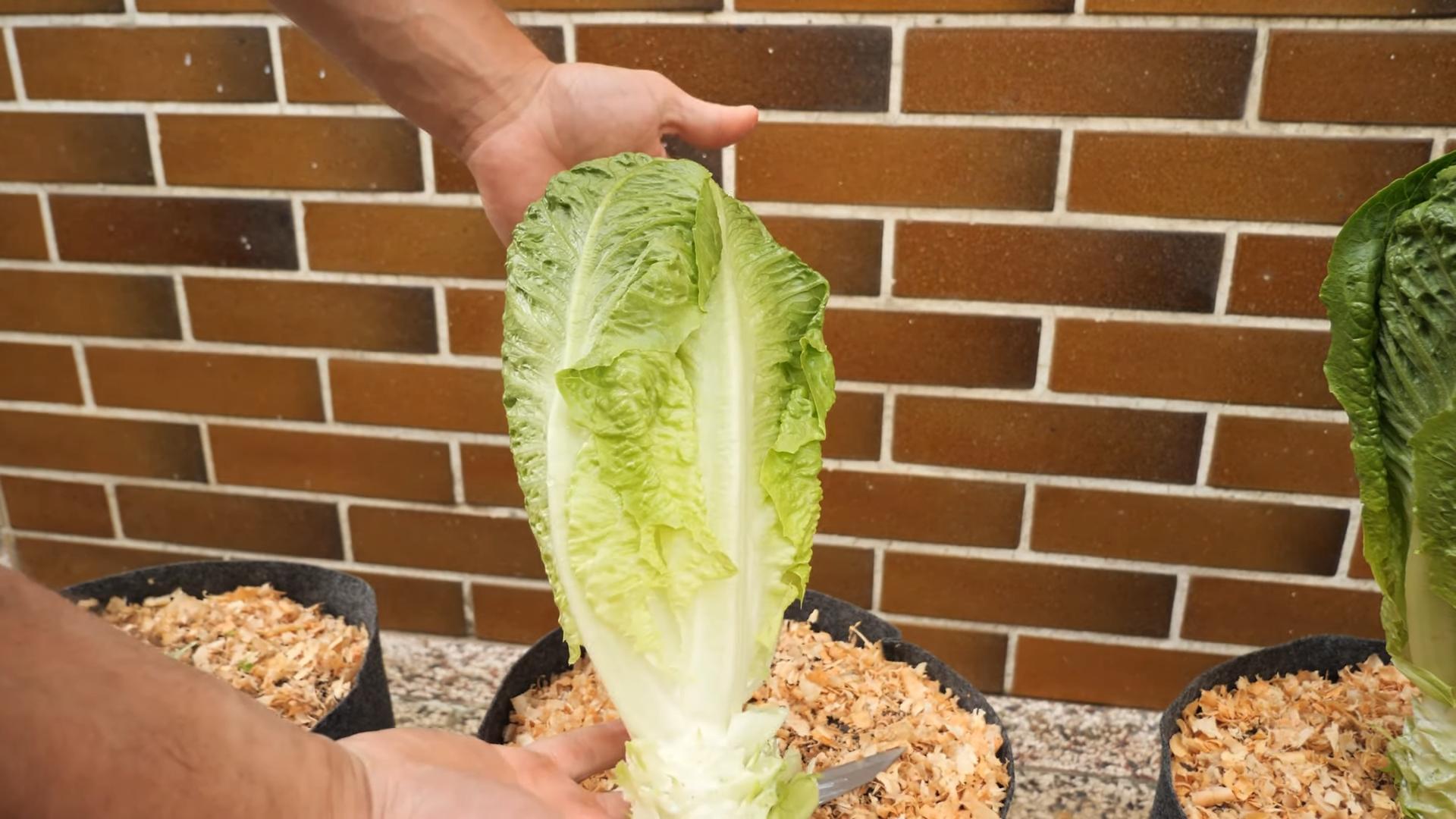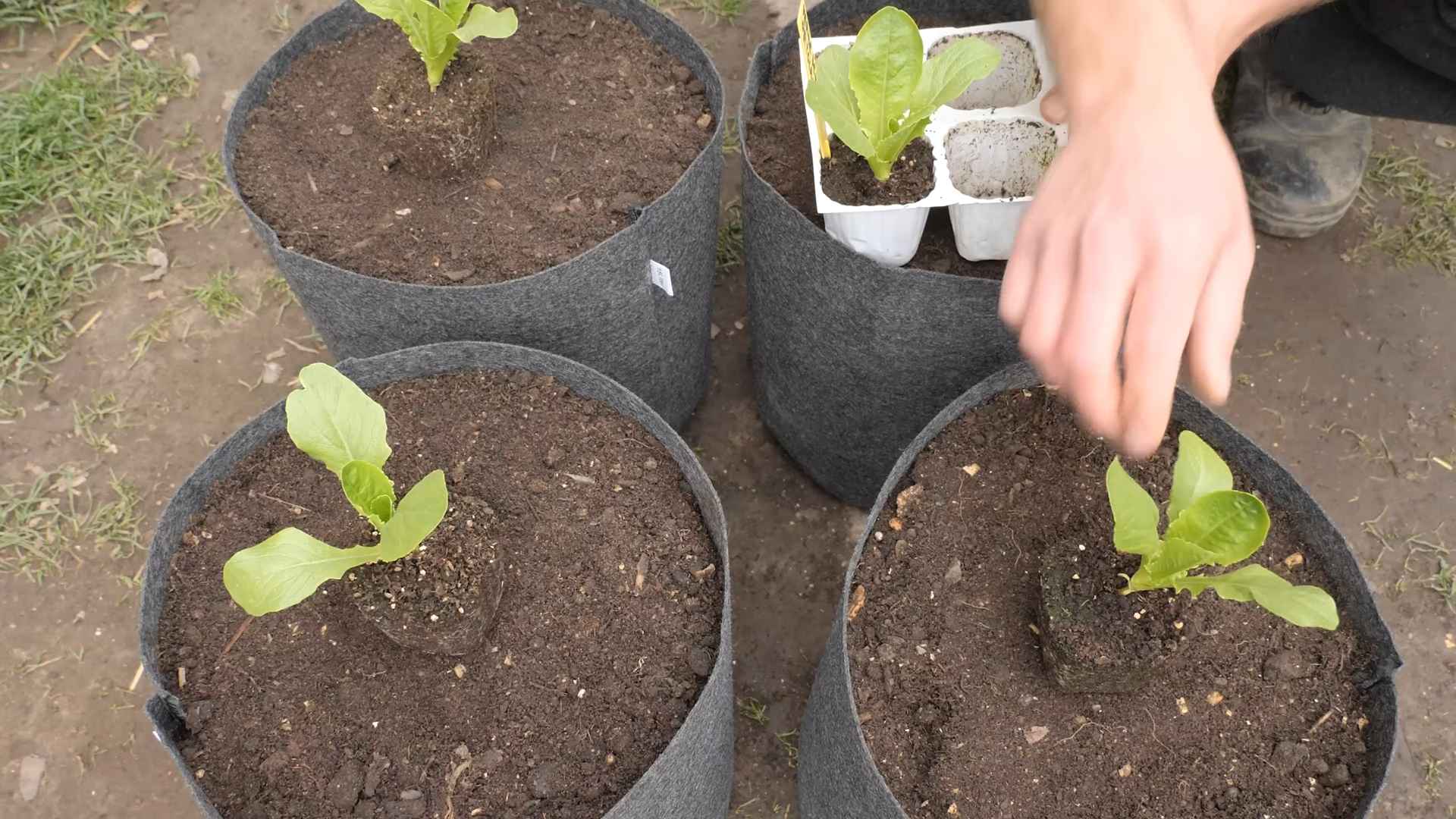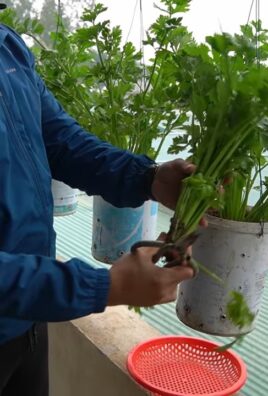Grow Romaine Lettuce at Home? Absolutely! Imagine stepping outside your back door and harvesting crisp, fresh Romaine lettuce for your salad, sandwich, or even a delicious Caesar wrap. No more trips to the grocery store for wilted, overpriced greens! For centuries, cultivating your own food has been a cornerstone of self-sufficiency and a connection to the earth. From ancient Roman gardens to modern-day victory gardens, the ability to nurture and harvest our own produce has been a source of pride and sustenance.
But let’s be honest, the thought of starting a garden can be daunting. Where do you even begin? That’s where these simple, effective DIY tricks come in. I’m here to show you that you don’t need a sprawling farm or a green thumb to successfully grow Romaine lettuce at home. Whether you have a spacious backyard or just a sunny windowsill, these hacks will empower you to cultivate your own thriving lettuce patch.
In this article, I’ll share my favorite easy-to-follow methods, from seed starting to harvesting, ensuring you’ll be enjoying homegrown Romaine in no time. So, ditch the store-bought lettuce and let’s get growing!

Grow Your Own Delicious Romaine Lettuce: A Beginner’s Guide
Hey there, fellow gardening enthusiasts! Ever dreamt of having fresh, crisp romaine lettuce right at your fingertips? Well, dream no more! Growing your own romaine is surprisingly easy and rewarding. I’m going to walk you through everything you need to know, from seed to salad bowl. Let’s get started!
Choosing Your Romaine Variety
First things first, let’s talk romaine varieties. There are a bunch to choose from, each with its own unique characteristics. Here are a few popular options:
* ‘Paris Island Cos’: This is a classic, upright romaine with dark green leaves and a slightly sweet flavor. It’s a reliable choice and widely available.
* ‘Little Gem’: As the name suggests, this is a smaller, more compact romaine, perfect for smaller gardens or containers. It has a crisp texture and a slightly nutty flavor.
* ‘Rouge d’Hiver’: If you’re looking for something a little different, try this red romaine. It adds a beautiful splash of color to your garden and has a mild, slightly sweet flavor.
* ‘Valmaine’: This variety is known for its heat tolerance, making it a good choice for warmer climates. It has a crisp texture and a slightly bitter flavor.
I personally love ‘Paris Island Cos’ because it’s so easy to grow and produces large, flavorful heads. But feel free to experiment and find the variety that you like best!
Getting Started: Seeds vs. Seedlings
You have two main options when it comes to starting your romaine: seeds or seedlings.
* Seeds: Starting from seed is the most economical option, and it gives you more control over the entire growing process. However, it requires a bit more patience and attention.
* Seedlings: Buying seedlings from a nursery or garden center is a quicker and easier option, especially if you’re short on time or space. Just make sure to choose healthy-looking seedlings with no signs of disease or pests.
I usually start my romaine from seed because I enjoy the process and it’s more budget-friendly. But if you’re a beginner, seedlings might be a good place to start.
Starting Romaine from Seed: A Step-by-Step Guide
Okay, let’s dive into the nitty-gritty of starting romaine from seed.
1. Gather Your Supplies: You’ll need:
* Romaine lettuce seeds
* Seed starting trays or small pots
* Seed starting mix (a light, well-draining soil mix)
* A spray bottle filled with water
* A warm, sunny location or a grow light
2. Sow the Seeds: Fill your seed starting trays or pots with seed starting mix. Moisten the soil with your spray bottle. Sow the seeds about ¼ inch deep, spacing them about an inch apart. Gently cover the seeds with soil and mist again.
3. Provide Warmth and Light: Romaine seeds need warmth to germinate. Keep the trays or pots in a warm location, ideally between 60-70°F (15-21°C). If you don’t have a sunny spot, use a grow light.
4. Keep the Soil Moist: The soil should be consistently moist, but not soggy. Check the soil daily and mist with water as needed.
5. Thin the Seedlings: Once the seedlings have their first true leaves (the second set of leaves), thin them out so that only the strongest seedling remains in each cell or pot. This gives them enough space to grow.
6. Harden Off the Seedlings: Before transplanting the seedlings outdoors, you need to “harden them off.” This means gradually exposing them to outdoor conditions over a period of about a week. Start by placing them in a sheltered location for a few hours each day, gradually increasing the amount of time they spend outdoors.
Transplanting Your Romaine Lettuce
Now that your seedlings are ready, it’s time to transplant them into your garden or containers.
1. Choose a Location: Romaine lettuce prefers a sunny location with well-drained soil. It can tolerate some partial shade, especially in hot climates.
2. Prepare the Soil: Amend the soil with compost or other organic matter to improve its fertility and drainage.
3. Transplant the Seedlings: Dig holes that are slightly larger than the root balls of the seedlings. Gently remove the seedlings from their trays or pots and place them in the holes. Space the seedlings about 8-12 inches apart.
4. Water Thoroughly: Water the seedlings thoroughly after transplanting.
5. Mulch: Apply a layer of mulch around the plants to help retain moisture and suppress weeds. I like to use straw or shredded leaves.
Caring for Your Romaine Lettuce
Once your romaine is transplanted, it’s important to provide it with proper care to ensure a healthy and bountiful harvest.
1. Watering: Romaine lettuce needs consistent moisture, especially during hot, dry weather. Water deeply whenever the top inch of soil feels dry. Avoid overhead watering, as this can lead to fungal diseases.
2. Fertilizing: Feed your romaine lettuce with a balanced fertilizer every few weeks. Follow the instructions on the fertilizer package. I like to use a liquid fertilizer diluted in water.
3. Weeding: Keep the area around your romaine lettuce free of weeds. Weeds compete with the lettuce for nutrients and water.
4. Pest Control: Keep an eye out for pests such as aphids, slugs, and snails. If you spot any pests, take action immediately. You can use insecticidal soap, diatomaceous earth, or other organic pest control methods.
5. Bolting Prevention: Bolting is when lettuce plants send up a flower stalk, which makes the leaves bitter. To prevent bolting, keep the soil consistently moist, provide some shade during hot weather, and harvest the lettuce regularly.
Harvesting Your Romaine Lettuce
The moment you’ve been waiting for! Harvesting your own homegrown romaine lettuce is incredibly satisfying.
1. When to Harvest: You can start harvesting romaine lettuce when the heads are about half their mature size. The leaves should be firm and crisp.
2. How to Harvest: You can harvest the entire head of lettuce at once, or you can harvest individual leaves as needed. To harvest the entire head, use a sharp knife to cut the stem at the base of the plant. To harvest individual leaves, simply snap them off from the outer part of the head.
3. Storage: Store harvested romaine lettuce in the refrigerator. Wrap the head in a damp paper towel and place it in a plastic bag. It should last for about a week.
Troubleshooting Common Romaine Lettuce Problems
Even with the best care, you might encounter some problems while growing romaine lettuce. Here are a few common issues and how to address them:
* Aphids: These tiny pests can suck the sap from lettuce leaves, causing them to become distorted and yellow. Spray aphids with insecticidal soap or neem oil.
* Slugs and Snails: These slimy creatures can munch on lettuce leaves, leaving holes. Handpick slugs and snails, or use slug bait.
* Downy Mildew: This fungal disease can cause yellow spots on lettuce leaves. Improve air circulation around the plants and avoid overhead watering.
* Bolting: As mentioned earlier, bolting is when lettuce plants send up a flower stalk. Prevent bolting by keeping the soil consistently moist, providing some shade during hot weather, and harvesting the lettuce regularly.
Growing Romaine in Containers
Don’t have a garden? No problem! You can easily grow romaine lettuce in containers.
1. Choose a Container: Select a container that is at least 6 inches deep and 12 inches wide. Make sure the container has drainage holes.
2. Use Potting Mix: Fill the container with a high-quality potting mix.
3. Plant the Seedlings: Transplant the seedlings into the container, spacing them about 6 inches apart.
4. Water and Fertilize: Water and fertilize the lettuce as needed.
5. Place in a Sunny Location: Place the container in a sunny location.
Enjoying Your Homegrown Romaine
Now that you’ve harvested your own delicious romaine lettuce, it’s time to enjoy it! Use it in salads, sandwiches, wraps, or any other dish that calls for fresh, crisp lettuce. There’s nothing quite like the taste of homegrown produce!
I hope this guide has inspired you to grow your own romaine lettuce. It’s a fun and rewarding experience that will provide you with fresh, healthy greens all season long. Happy gardening!

Conclusion
So, there you have it! Growing your own Romaine lettuce at home is not only achievable but also incredibly rewarding. Forget those wilted, overpriced heads of lettuce at the grocery store. Imagine crisp, vibrant Romaine, bursting with flavor, just steps away from your kitchen. This DIY trick transforms your kitchen scraps into a continuous supply of fresh greens, minimizing waste and maximizing deliciousness.
Why is this a must-try? Because it’s sustainable, cost-effective, and undeniably satisfying. You’re reducing your carbon footprint by cutting down on transportation and packaging, saving money on your grocery bill, and experiencing the simple joy of nurturing something from virtually nothing. Plus, the taste of homegrown Romaine is simply superior – sweeter, crisper, and more flavorful than anything you can buy.
But don’t stop there! Experiment with different varieties of Romaine. Try growing red Romaine for a pop of color in your salads, or explore other types of lettuce altogether. You can also adjust the growing conditions to see what works best in your environment. Some people find that a slightly shadier spot produces sweeter lettuce, while others prefer a sunnier location for faster growth. Consider using different types of containers, from repurposed plastic tubs to stylish terracotta pots, to find what suits your aesthetic and space. You can even try hydroponic setups for an even more efficient and space-saving approach to growing your own Romaine lettuce.
This simple DIY trick for growing Romaine lettuce at home is a game-changer for anyone who loves fresh salads and wants to live a more sustainable lifestyle. It’s a fantastic project for families, teaching children about the life cycle of plants and the importance of reducing waste. It’s also a great way to connect with nature, even if you live in an urban environment.
We wholeheartedly encourage you to give this a try. It’s easier than you think, and the results are well worth the effort. Don’t be afraid to experiment, learn from your mistakes, and most importantly, have fun! Once you’ve harvested your first batch of homegrown Romaine, you’ll be hooked.
Share your experiences with us! We’d love to hear about your successes, your challenges, and any variations you’ve tried. Post pictures of your thriving Romaine plants, share your favorite recipes using your homegrown lettuce, and let us know what you’ve learned along the way. Together, we can create a community of home gardeners who are passionate about growing their own food and living a more sustainable life. So, grab those Romaine lettuce scraps, get your hands dirty, and start growing your own delicious, fresh Romaine lettuce today! You won’t regret it.
Frequently Asked Questions (FAQ)
How long does it take to grow Romaine lettuce from a base?
The time it takes to grow Romaine lettuce from a base can vary depending on several factors, including the amount of sunlight, water, and nutrients it receives, as well as the ambient temperature. Generally, you can expect to see new growth within a few days of placing the base in water. Within 2-3 weeks, you should have enough leaves to start harvesting. However, keep in mind that this method primarily focuses on regrowing the leaves, not necessarily producing a full-sized head of lettuce. For a larger head, transplanting to soil and providing adequate care is essential.
What kind of water should I use?
Tap water is generally fine for regrowing Romaine lettuce. However, if your tap water is heavily chlorinated, it’s best to let it sit out for 24 hours before using it to allow the chlorine to dissipate. Filtered water or rainwater are also excellent options. Avoid using distilled water, as it lacks the minerals that plants need to thrive. Change the water every 1-2 days to prevent bacterial growth and keep the base healthy.
How much sunlight does Romaine lettuce need?
Romaine lettuce thrives in partial to full sunlight, requiring at least 4-6 hours of direct sunlight per day. However, in hotter climates, providing some afternoon shade can prevent the leaves from wilting or becoming bitter. When starting the regrowth process in water, placing the base near a sunny windowsill is ideal. Once you transplant the lettuce to soil, ensure it receives adequate sunlight, but monitor it closely for signs of heat stress.
Can I grow Romaine lettuce indoors year-round?
Yes, you can grow Romaine lettuce indoors year-round, especially if you provide supplemental lighting. A grow light can mimic the effects of natural sunlight, ensuring that your lettuce receives the light it needs to thrive, even during the winter months. Place the grow light a few inches above the plants and keep it on for 12-14 hours per day. Additionally, maintaining a consistent temperature and humidity level indoors will help your lettuce grow successfully.
What kind of soil is best for growing Romaine lettuce?
Romaine lettuce prefers well-draining soil that is rich in organic matter. A good potting mix amended with compost or aged manure is ideal. The soil should be slightly acidic to neutral, with a pH between 6.0 and 7.0. Avoid using heavy clay soil, as it can retain too much water and lead to root rot. Before planting, loosen the soil and remove any rocks or debris.
How often should I fertilize my Romaine lettuce?
If you are growing your Romaine lettuce in water, you don’t need to fertilize it initially. However, once you transplant it to soil, you can start fertilizing it every 2-3 weeks with a balanced liquid fertilizer diluted to half strength. Look for a fertilizer that is specifically formulated for leafy greens. Avoid over-fertilizing, as this can lead to excessive leaf growth and a bitter taste.
How do I know when to harvest my Romaine lettuce?
You can start harvesting Romaine lettuce leaves once they are about 4-6 inches long. You can either harvest the entire head at once or harvest individual leaves as needed, starting with the outer leaves. To harvest, simply cut the leaves off at the base of the plant with a sharp knife or scissors. Avoid tearing the leaves, as this can damage the plant and make it more susceptible to disease.
What are some common problems when growing Romaine lettuce and how can I prevent them?
Some common problems when growing Romaine lettuce include aphids, slugs, snails, and fungal diseases. To prevent these problems, keep your growing area clean and free of debris. Regularly inspect your plants for signs of pests or diseases and take action promptly. You can use organic pest control methods, such as insecticidal soap or neem oil, to control aphids and other pests. To prevent slugs and snails, you can use beer traps or diatomaceous earth. To prevent fungal diseases, ensure good air circulation and avoid overwatering.
Can I grow other types of lettuce using this method?
Yes, you can try regrowing other types of lettuce using this method, such as butter lettuce, iceberg lettuce, and leaf lettuce. However, the success rate may vary depending on the variety. Some types of lettuce are more likely to regrow than others. Experiment and see what works best for you.
What if my Romaine lettuce base starts to rot?
If your Romaine lettuce base starts to rot, it’s likely due to overwatering or poor drainage. Remove the rotting base immediately to prevent the spread of disease. Start with a fresh base and ensure that you are changing the water regularly and providing adequate drainage. You can also try adding a small amount of hydrogen peroxide to the water to help prevent bacterial growth.




Leave a Comment